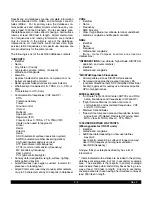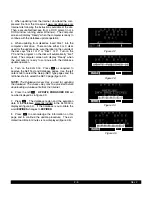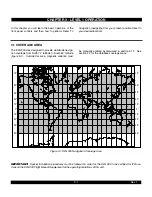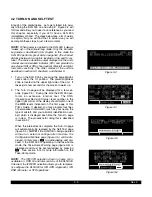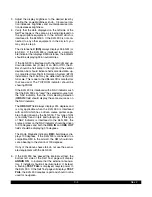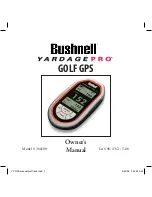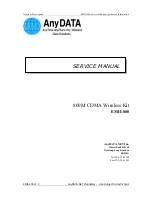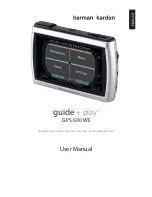
2-3
Rev 2
2.3 USE OF ICAO IDENTIFIERS
Waypoints are stored in the KLN 900 database almost
exclusively by their ICAO identifiers. ICAO is an interna-
tionally accepted reference for the data. In almost all
cases the proper ICAO identifiers may be taken directly
from Jeppesen Sanderson or government aeronautical
charts. For example, Dallas and Los Angeles VORs have
the familiar ICAO identifiers DFW and LAX, respectively.
Please note that one area of potential confusion is airport
identifiers in the Continental United States, Alaska, and
Canada. Many airport identifiers in the database have
four letters beginning with a prefix letter that corresponds
to the geographic area in which it is located. The prefix
letter for the Continental United States is “K”. Thus, the
identifier for Dallas/Fort Worth International airport is
KDFW, not DFW. This distinguishes the airport identifier
from the VOR identifier. Likewise, the identifier for Los
Angeles International airport is KLAX while the VOR iden-
tifier is LAX. The prefix letter for Alaska is “P” and for
Canada is “C”.
NOTE: There are several exceptions in Alaska. In many
cases, airports with three letter identifiers receive the
prefix “P”, but there are many that don’t. The most reliable
method of determining an Alaska airport identifier is to
look it up from the airport name or city. See section 3.7.4,
“Selecting Waypoints by Name or CIty”.
Not all airport identifiers receive the prefix letter. Airport
identifiers which are combinations of letters and numbers
do not receive the prefix letter. Examples of airport identi-
fiers not using the prefix are 3C2, 7TX6, and M33.
So remember, if you are entering or looking for an
airport identifier that is all letters (no numbers) then it
will begin with a “K” prefix in the Continental U.S., a
“P” in Alaska, or a “C” in Canada. If there are num-
bers in the identifier then a prefix is not used. For
other areas of the world the airport identifier stored in
the KLN 900 database is identical to how it is charted.
2.4 UPDATING THE DATABASE
The information stored in the database would eventually
become obsolete if there wasn’t some means to update it.
For example, navaids can move or change frequency,
new runways can be added to an airport, communication
frequencies can change, and on and on.
The database is housed in a PCMCIA card which plugs
directly into the front of the KLN 900. It is designed so
that there are two ways for the user to easily keep the
database current. The first is to electronically update the
database by means of a personal computer and a data-
base file that has been downloaded from the Honeywell
Internet site or supplied by Honeywell on 3.5” diskettes. A
jack, mounted on the front of the KLN900, provides a
means of interfacing the KLN 900 with the computer via
an interface cable.
The second method of database update is to remove the
old card and insert a current card. This method involves
returning the old card to Honeywell.
Every 28 days, Honeywell receives new Nav Data™
information from Jeppesen Sanderson. This information
is processed and both installed on the Honeywell Internet
site and downloaded onto diskettes and database cards.
Honeywell makes these types of update services avail-
able to you in a choice of several subscription or random
update programs. See section 2.8 of this manual for
details on these programs.
Regardless of whether the computer method or the card
exchange method of database updating is used,
Honeywell sends the update so that it arrives prior to the
next effective date. The new update may be installed any
time prior to the effective date and the KLN 900 will use
the previous data up to the effective date and automati-
cally begin using the new data on the effective date.
In order to get maximum utilization from the KLN 900,
Honeywell highly encourages you to update the database
on a frequent basis, if not every 28 days. It is also a mat-
ter of safety to not fly with out-of-date information.
WARNING: The accuracy of the database informa-
tion is only assured if it is used before the end of the
effectivity period. Use of out-of-date database infor-
mation is done entirely at the user’s own risk.
Summary of Contents for KLN 900s
Page 1: ...Pilot s Guide KLN 900 Global Positioning System ORS 01 02 and 04 ...
Page 3: ...ii Rev 2 THIS PAGE INTENTIONALLY LEFT BLANK ...
Page 57: ...3 30 Rev 2 THIS PAGE INTENTIONALLY LEFT BLANK ...
Page 89: ...3 62 Rev 2 THIS PAGE INTENTIONALLY LEFT BLANK ...
Page 103: ...4 14 Rev 2 THIS PAGE INTENTIONALLY LEFT BLANK ...
Page 132: ...5 25 Rev 2 THIS PAGE INTENTIONALLY LEFT BLANK ...
Page 157: ...5 50 Rev 2 THIS PAGE INTENTIONALLY LEFT BLANK ...
Page 170: ...6 13 Rev 2 THIS PAGE INTENTIONALLY LEFT BLANK ...
Page 189: ...8 4 Rev 2 THIS PAGE INTENTIONALLY LEFT BLANK ...
Page 191: ...9 2 Rev 2 THIS PAGE INTENTIONALLY LEFT BLANK ...
Page 193: ...Rev 2 THIS PAGE INTENTIONALLY LEFT BLANK A 2 ...
Page 201: ...Rev 2 THIS PAGE INTENTIONALLY LEFT BLANK B 8 ...
Page 213: ...Rev 2 THIS PAGE INTENTIONALLY LEFT BLANK E 2 ...
Page 223: ...Rev 2 I 6 THIS PAGE INTENTIONALLY LEFT BLANK ...














